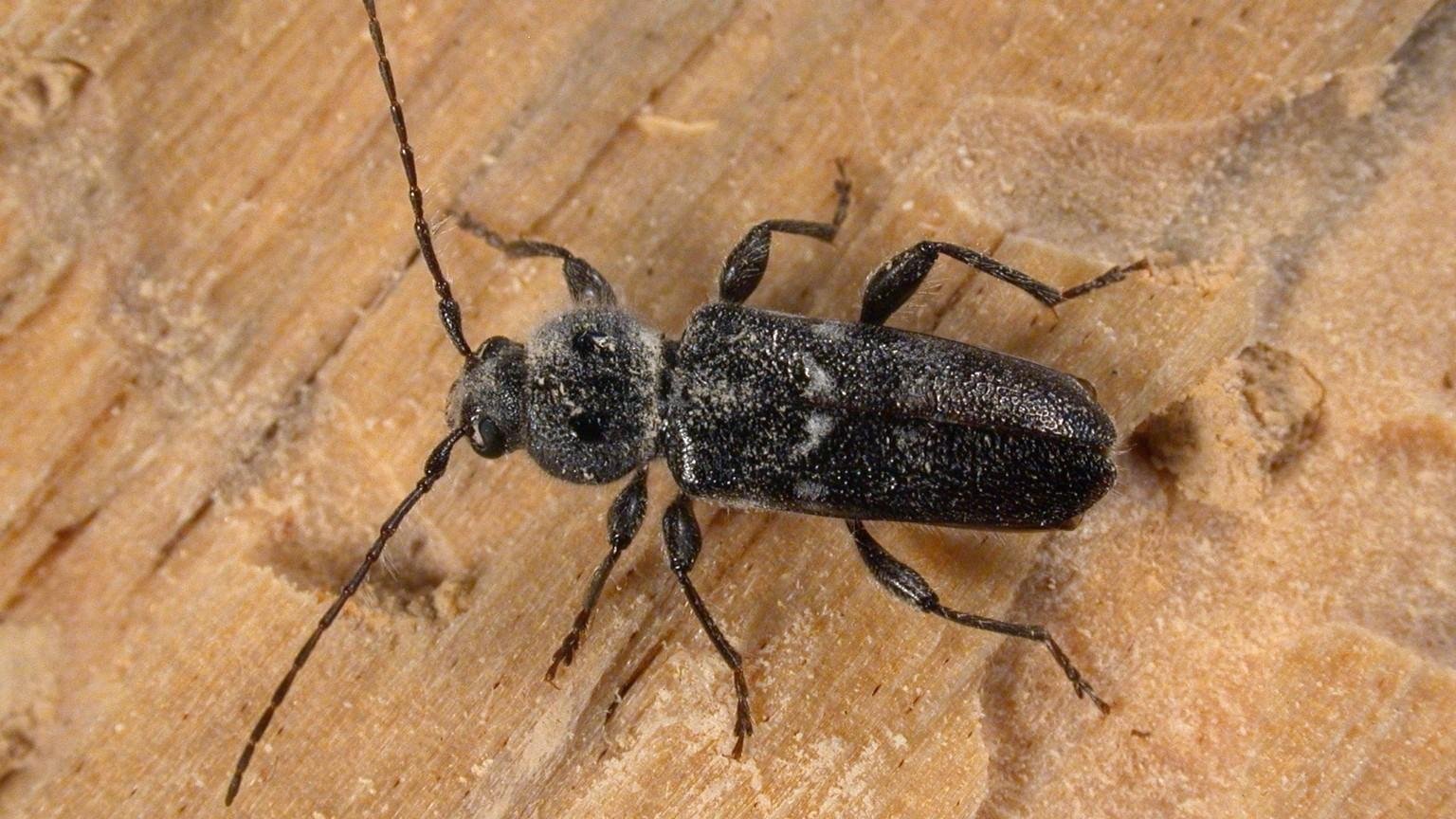What to look for: Wood-Boring Beetles
Knowing the differences between wood-boring beetles, such as powderpost beetles, round-headed borers, and flat-headed borers is crucial for effectively managing infestations. These beetles vary in appearance: powderpost beetles are small and cylindrical with reddish-brown to black bodies, round-headed borers have round, robust bodies often adorned with colorful markings, and flat-headed borers feature flattened bodies and metallic blue or green hues. They all possess hardened wing covers and powerful jaws for chewing through wood, making them adept at infiltrating and damaging wooden structures.
Wood-boring beetles commonly enter homes through infested wood products such as lumber, firewood, or antique furniture. They may also find their way indoors through cracks, gaps in siding, or through openings around windows and doors. Once inside, female beetles lay eggs directly on or inside the wood, where larvae hatch and begin tunneling through the wood fibers to feed and grow.
The damage inflicted by wood-boring beetles primarily occurs during the larval stage. Larvae tunnel through the wood, creating networks of galleries that weaken its structural integrity. This activity can result in visible exit holes on the wood surface, sawdust-like frass (excrement), and eventually, structural damage if left untreated. Different species of wood-boring beetles prefer different types of wood, so the severity and extent of damage can vary.
Effectively managing wood-boring beetle infestations involves several strategies. First, identifying and removing infested wood is crucial to halt the lifecycle of the beetles. Infested wood should be replaced or treated with appropriate insecticides to eliminate remaining larvae and prevent re-infestation. Insecticidal treatments may involve surface sprays, injections into wood galleries, or fumigation for severe cases. Additionally, addressing moisture issues and ensuring proper ventilation can help deter beetle activity, as some species are attracted to moist or damp wood.
Wood-boring beetles pose a significant threat to wooden structures in California homes. By recognizing their appearance, understanding their entry points and feeding habits, and employing effective eradication methods, pest control companies can assist homeowners in safeguarding their properties against the damaging effects of wood-boring beetle infestations. Providing education on preventive measures, such as proper wood storage and regular inspections, is also essential in maintaining a pest-free home environment.




